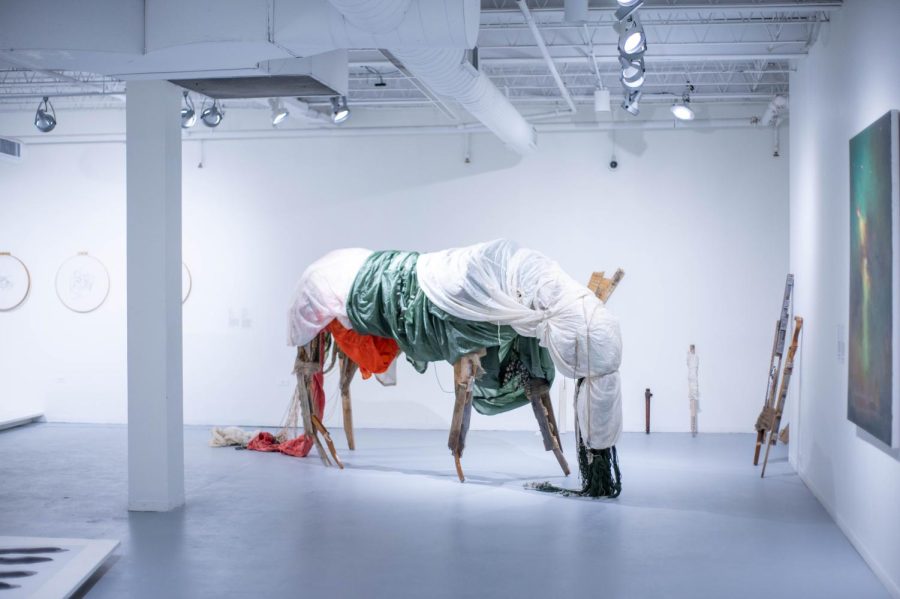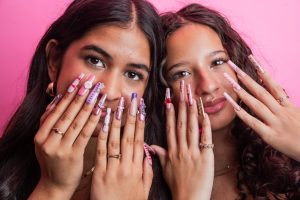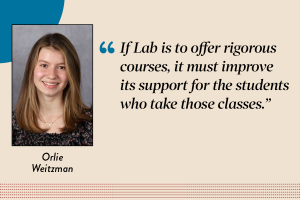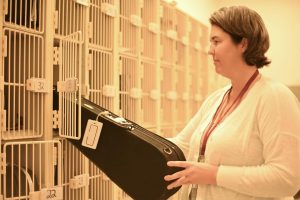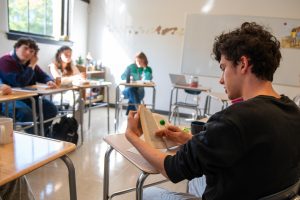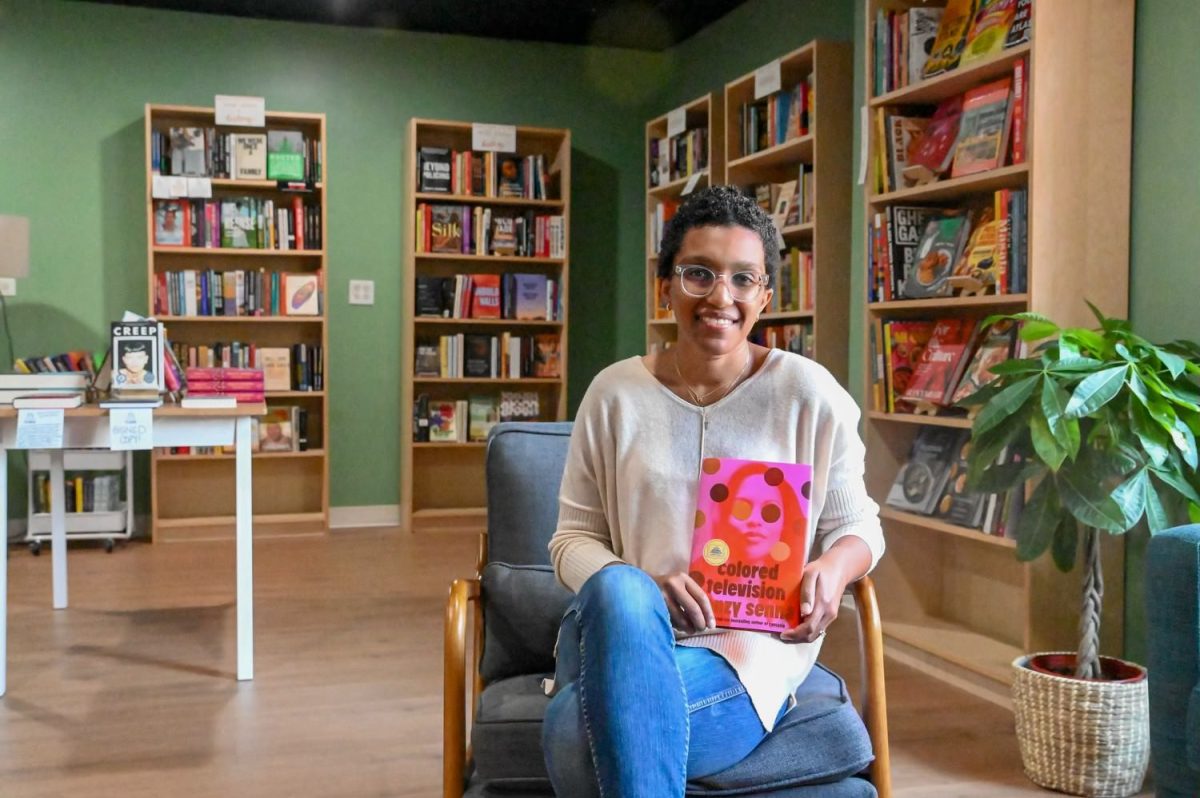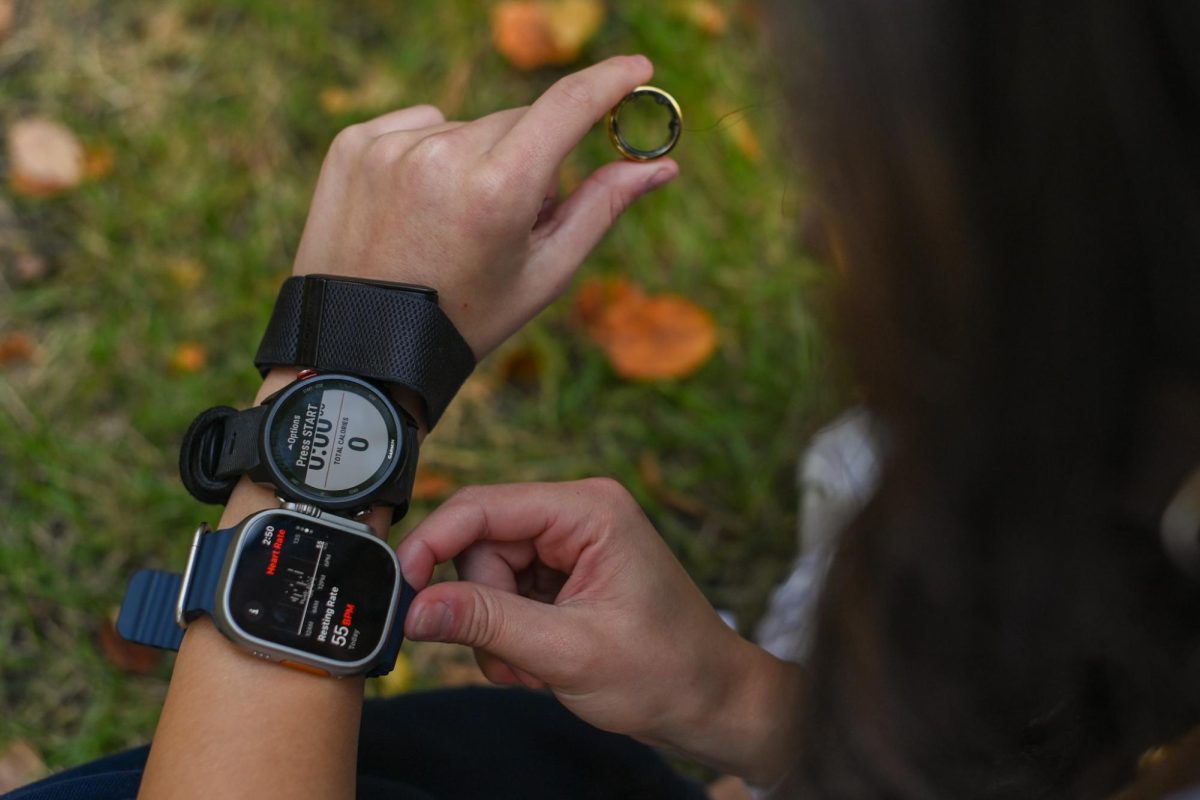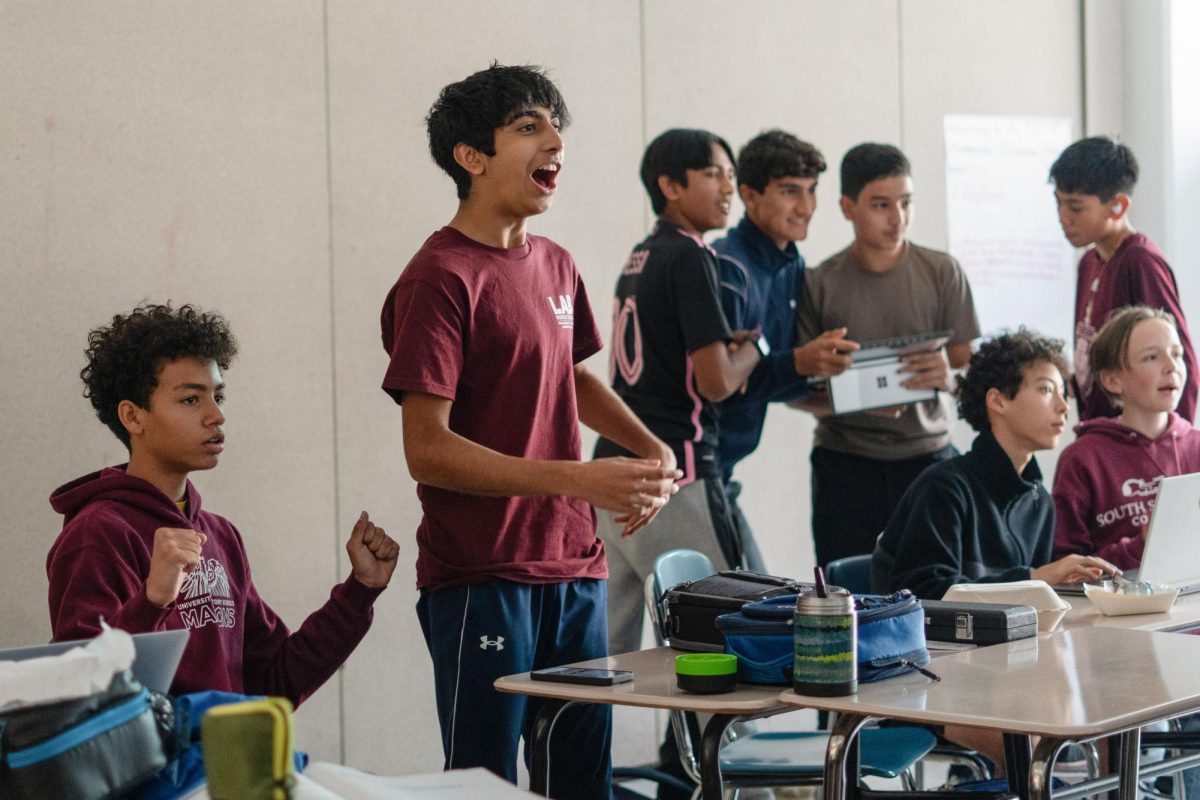Hyde Park exhibit explores American veteran experience
STRIKING SCULPTURE. On exhibit at the Hyde Park Art Center, “Surviving The Long Wars: Unlikely Entanglements,” uses art to dive into the complex experiences of Black and Indigenous veterans in America.
April 3, 2023
Serving the nation is honored as the greatest sacrifice that a person can make, yet many veterans struggle to reintegrate into society after their service, making the conversation around veterans one of the greatest hypocrisies of American civil culture.
Sparked by this conversation, The Hyde Park Art Center unveiled on March 17 a new exhibition, “Surviving The Long Wars: Unlikely Entanglements,” which explores the experiences of veterans in the two longest conflicts in American history, the American Indian wars and The War on Terror, with a specific focus on the 2003 invasion of Iraq.
The exhibit provides insight into the complex experiences that veterans, particularly those who are Black and Indigenous, associate with their service.
The exhibition was curated by Aaron Hughes, a former artist in residence at The Hyde Park Art Center. Two other sections of the exhibit are on display at the Newberry Library and Chicago Cultural Center.
Allison Quinn, director of curation and residency at The Hyde Park Art Center, had seen an earlier version of the exhibition three years ago and was interested in displaying some of the art in the center’s gallery. She wanted the center to be part of this show.
““I just felt like it was an important audience that we hadn’t had any programming for and wanted to be open to,” Ms. Quinn said.
Whereas the Chicago Cultural Center is displaying work from more established artists and the Newberry Library’s exhibition focuses on print, “Unlikely Entanglements,” the The Hyde Park Art Center section of the show, mainly consists of experimental art. Media vary from abstract painting to mixed media projects such as Joe Devera’s sculptural piece “And All The King’s Men,” which depicts a creature that loosely resembles a horse made from pieces of wood and is draped in sheets of fabric. Another piece, “Suture,” is a box made of camouflage material with metal and packs of gauze taped to it by Ruth Kaneko, a native Hawaiian.
Veteran Rodney Ewing has a series in the exhibit layering photos of Black laborers working in the early 20th century with patent sketches for machinery from the same period, showing the relationship between industrialization in the United States and the exploitation of Black labor.
The exhibition displays the creativity of the veteran community and the complex relationship that Black and Indigenous veterans feel serving a country that so often turns its back on them. This is the reason that The Hyde Park Art Center took an interest in the show.
“It wasn’t about bullets and sunsets and helmets, it was about psychological effects and trauma, but also about brotherhood and connection and all these other things that make it so much more complex,” Ms. Quinn said. “I felt like it was a very up-to-date notion of all the good and bad of defending this country.”



